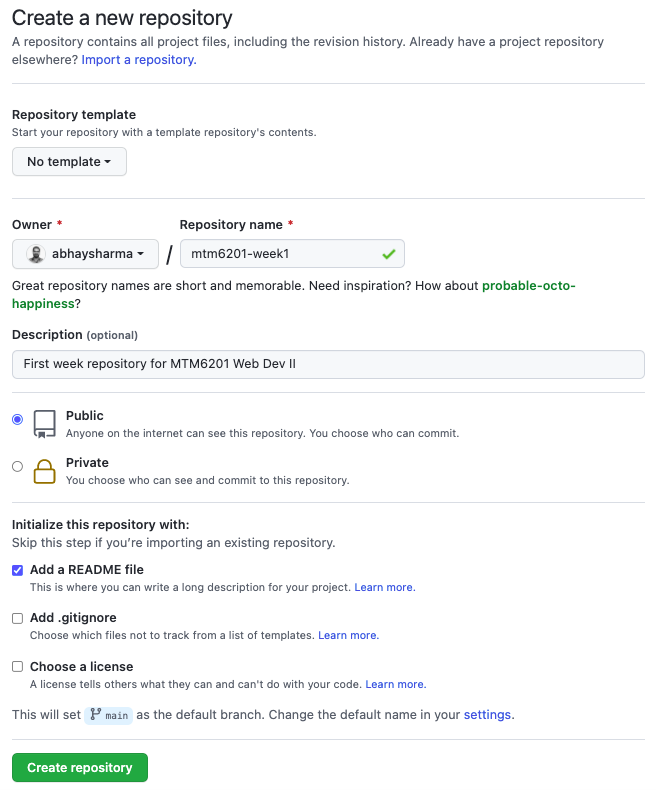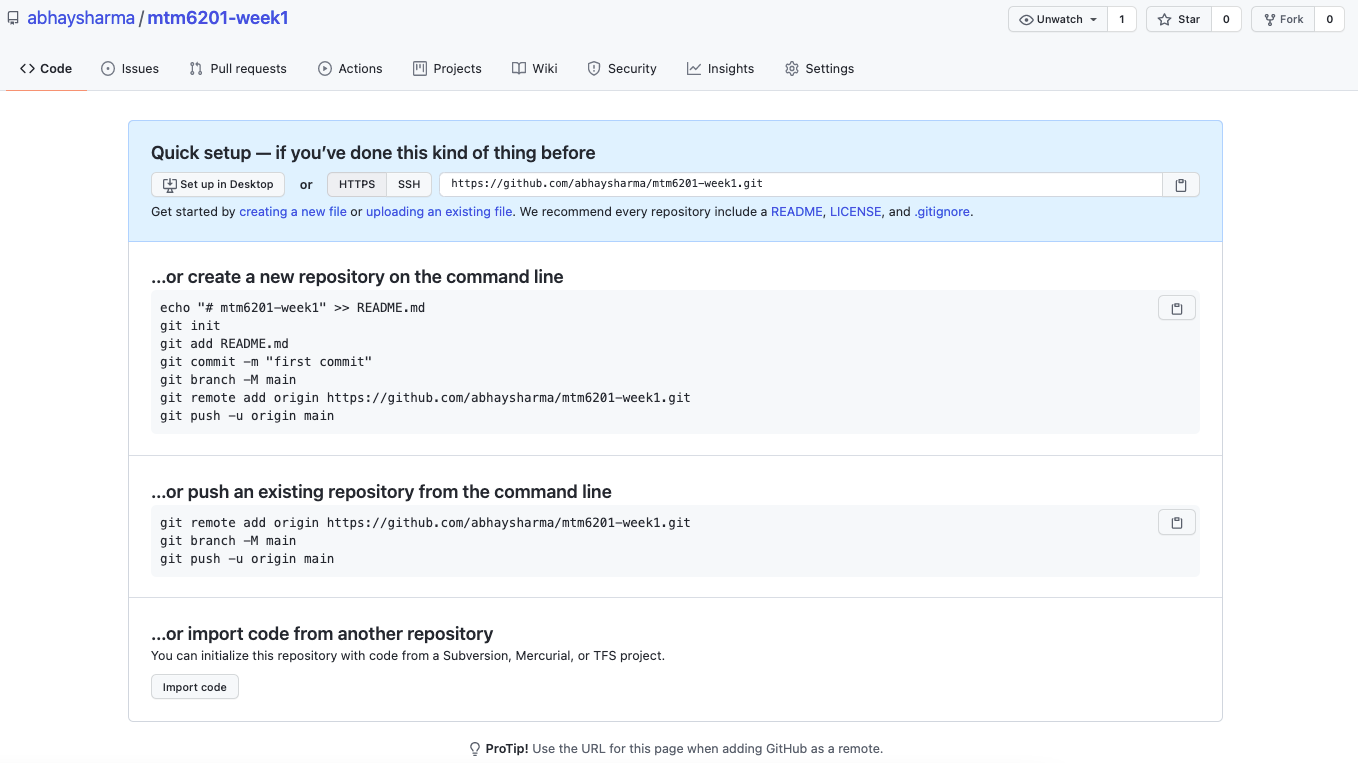GitHub Repository
A repository is a location or container where we can store our code. A GitHub repository is referred to as a location on GitHub.com for storing our code. We can create unlimited repositories on GitHub with some size limitations. A repository should ideally be less than 1GB and strictly below 5GB. A single file is limited to 100MB. Read more about repository limits.
Creating a Repository on GitHub
Creating a repository on GitHub is a fairly straightforward process, there are just a few options you need to know.
To create a repository on Github, log into GitHub, and select New repository from the + icon in the top right side of the navigation.

Or go to https://github.com/new.
Provide a repository name and description. The name must be unique for the repository you own and contain no spaces. Adding a description is optional, but encouraged.
Choose if this will be a public or private repository. Public repositories are visible by the public, while private repositories can only be seen by you. As of January 2019, free accounts at GitHub can now create unlimited private repositories.
Note
We will use public repositories for this course.
Next, you can choose whether or not to automatically add a README file to the repository.
- If this is a new project, with no local repository, check the box.
- If there is a local repository that needs to be connected to GitHub, leave the box unchecked.
It is also possible to add gitignore and license files to the repository.
Finally, click Create Repository.

When it is done, you will be redirected to the repository page.

This YouTube video was created by GitHub Training & Guides.